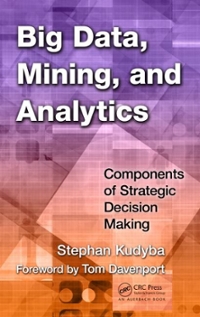Answered step by step
Verified Expert Solution
Question
1 Approved Answer
a) Draw a deterministic finite automata which accepts string over the alphabet {a,b} which don't contain the substring aa. So for example the strings: ,
a) Draw a deterministic finite automata which accepts string over the alphabet {a,b} which don't contain the substring aa. So for example the strings: , aba, bbabba would be in this language. Then write down this automata formally using 5-tuple notation.
b) Argue using the pigeonhole principle, that any time your automata above accepts a string longer than some fixed length, it must repeat a state. For the automata you drew, what is this fixed length?
Mostly looking for an answer on b) ! Please explain. Thank you very much.
Step by Step Solution
There are 3 Steps involved in it
Step: 1

Get Instant Access to Expert-Tailored Solutions
See step-by-step solutions with expert insights and AI powered tools for academic success
Step: 2

Step: 3

Ace Your Homework with AI
Get the answers you need in no time with our AI-driven, step-by-step assistance
Get Started


